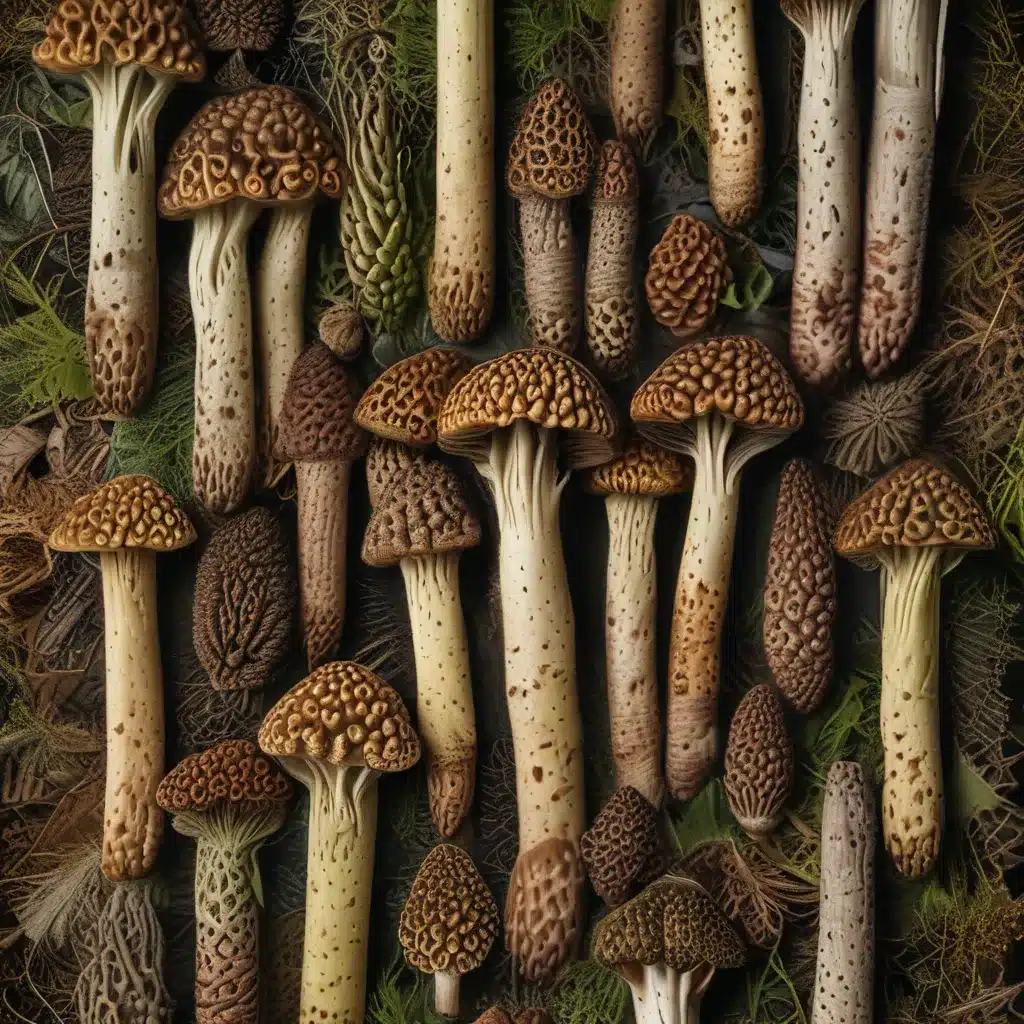
The Elusive Hunt for Morel Mushrooms
As a seasoned mushroom forager, I’ve learned that hunting for morels is like searching for hidden treasure. These enigmatic fungi have a way of teasing and taunting us, revealing themselves just enough to pique our curiosity, only to disappear back into the forest shadows. But oh, the thrill when you do stumble upon their golden-brown caps peeking out from the leaf litter!
Morels are a true delicacy, with a flavor that’s been described as nutty, earthy, and downright divine. But finding them can feel like chasing a rainbow. That is, until you unlock the secrets to successful morel foraging. And that’s exactly what I’m here to share with you today.
Cracking the Morel Code
The key to morel hunting success lies in understanding the symbiotic relationship between these mushrooms and the trees they rely on. Morels are what’s known as mycorrhizal fungi, meaning they have a mutually beneficial partnership with the roots of certain tree species. This underground alliance provides the morels with essential nutrients and carbohydrates, while the trees receive water and minerals from the fungal network.
So, if you want to become a morel master, you need to know your trees. And I’m not just talking about a casual acquaintance – I’m talking about an intimate, almost romantic understanding of their bark, leaves, and habitat preferences. Because where you find these trees, you’re likely to find morels.
Decoding the Trees
Let’s dive into the details, shall we? The trees most commonly associated with morel mushrooms include:
| Tree Species | Identifying Features | Morel Varieties | Regional Occurrence |
|---|---|---|---|
| Apple Trees | Small to medium-sized with short trunks and wide-spreading branches. Dark brown bark and oval-shaped leaves with serrated edges. | Morchella americana, Morchella angusticeps, Morchella cryptica | Found throughout the United States, especially in the Midwest and Northeast. |
| Ash Trees | Diamond-shaped bark patterns with a pale grayish-white color. Compound leaves with 5-9 glossy dark green leaflets. | Morchella americana, Morchella angusticeps, Morchella septentrionalis, Morchella cryptica, Morchella diminutiva | Native to North America, particularly in the eastern and central regions. |
| Aspen Trees | Smooth pale gray bark with black markings. Small, circular leaves that flutter in the wind. | Morchella septentrionalis | Found throughout much of North America, especially in the western half. |
The list goes on, with elm, oak, pine, sycamore, and tulip trees also serving as reliable morel magnets. Each species has its own unique set of identifying features, from the furrowed bark of cottonwoods to the mottled camouflage of sycamores. And don’t forget about those elusive burn site morels, which thrive in the aftermath of forest fires.
Mushroom Appreciation has an excellent breakdown of the top tree species to look for, complete with detailed identification tips and the morel varieties they tend to support.
A Forager’s Mindset
Now, I know what you’re thinking – that’s a lot of tree knowledge to cram into my brain! And you’re right, becoming a morel master doesn’t happen overnight. But the more you immerse yourself in the world of these fascinating fungi, the more it will all start to click.
The key is to approach morel hunting with a forager’s mindset. Embrace the adventure, the mystery, and the thrill of the chase. Slow down, be observant, and let your senses guide you. Listen to the whispers of the forest, feel the earth beneath your feet, and let your eyes wander, searching for those telltale shapes and colors.
And remember, patience is paramount. Morels don’t just fall into your basket – you have to earn them through hours of dedicated exploration. But that’s all part of the fun, isn’t it? The longer you search, the sweeter the reward when you finally spot those golden caps peeking out from the leaf litter.
A Culinary Delight
Of course, the true payoff of all this morel hunting comes when you get to savor their earthy goodness. These mushrooms are a true culinary treasure, with a flavor profile that’s been described as nutty, smoky, and even slightly peppery.
Whether you sauté them in butter, fold them into an omelette, or incorporate them into a decadent risotto, morels are sure to elevate any dish. And the best part? You can take pride in the fact that you foraged them yourself, from the very forests and fields that nurtured them.
Protecting the Morel Harvest
As with any wild edible, it’s important to exercise caution and respect when collecting morels. These mushrooms are a vital part of the forest ecosystem, and overharvesting can have serious consequences. Always be mindful of your impact, and never take more than you need.
Additionally, be sure to familiarize yourself with any local regulations or restrictions regarding morel foraging. Some areas may require permits or have designated collection zones. And of course, never trespass on private property without permission.
Closing Thoughts
So there you have it, my fellow foragers – the secrets to unlocking the mysteries of the morel mushroom. With a little tree knowledge, a whole lot of patience, and a deep appreciation for the natural world, you too can become a morel master.
And who knows – maybe your next morel hunting adventure will lead you right to our Thornapple CSA farm, where we’d be honored to share your bounty and incorporate these delectable fungi into our seasonal offerings. After all, what could be more satisfying than enjoying the fruits (or, in this case, the fungi) of your labor?
Happy hunting, my friends. May the morel gods be with you!



